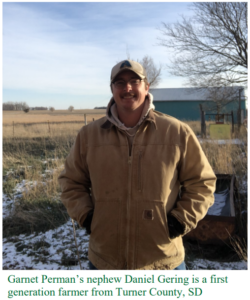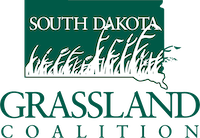 The machinery problem was solved by hiring custom workers and buying one or two necessary pieces a year. The USDA Beginning Farmer program proved to be a challenge to work through but provided relatively inexpensive financing. Good crop prices and timely rains helped at the beginning. He currently shares some machinery with his dad who bought land after deciding to sell the implement business. Brad jokes that he’s the oldest beginning farmer out there.
The machinery problem was solved by hiring custom workers and buying one or two necessary pieces a year. The USDA Beginning Farmer program proved to be a challenge to work through but provided relatively inexpensive financing. Good crop prices and timely rains helped at the beginning. He currently shares some machinery with his dad who bought land after deciding to sell the implement business. Brad jokes that he’s the oldest beginning farmer out there.
Daniel farmed conventionally for the first few years but his habit of reading and research, including a membership to the Soil Health Coalition enticed him to implement soil health practices. Gering started his soil health journey by planting cover crops that included radishes, barley, and peas. Small grains added diversity to the crop rotation. Three years ago he became one of the first to go fully no-till in an area where plowing to dry out the soil is a common practice. “The no-till drill is one of the best investments I’ve made,” he said.
